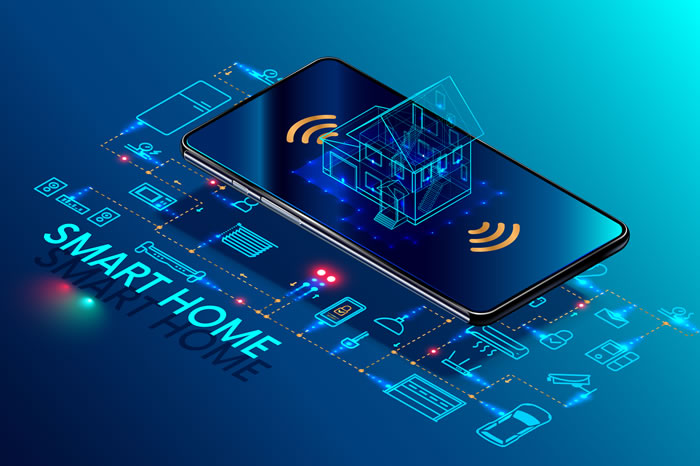
Smart homes integrate various devices and systems, leveraging technology to enhance convenience, comfort, security, and energy efficiency. Here’s an overview:
Components of a Smart Home:
- Smart Lighting: LED bulbs, smart switches, and dimmers controlled via apps or voice assistants for customizable lighting schedules and energy efficiency.
- Thermostats: Smart thermostats learn user preferences, adjust temperatures, and can be remotely controlled, saving energy by optimizing heating and cooling.
- Security Systems: Includes smart locks, video doorbells, cameras, and motion sensors, providing real-time monitoring and remote access for enhanced security.
- Entertainment Systems: Smart TVs, speakers, and home theater setups connect to streaming services, allowing voice or remote control for an immersive experience.
- Appliances: Smart refrigerators, washing machines, and ovens offer features like remote operation, energy monitoring, and automated settings.
- Voice Assistants: Devices like Amazon Echo (Alexa), Google Home (Google Assistant), or Apple HomePod facilitate voice control for various smart home devices.
Benefits of Smart Homes:
- Convenience: Automation and remote access enable easy control of home devices from anywhere, simplifying tasks and routines.
- Energy Efficiency: Smart thermostats, lights, and appliances optimize energy usage, reducing utility bills and environmental impact.
- Enhanced Security: Real-time monitoring, alerts, and remote access provide greater control and peace of mind against potential threats.
- Customization: Users can personalize settings, schedules, and preferences for a tailored living experience.
- Accessibility: Smart home features can aid individuals with disabilities or limited mobility by automating tasks and providing voice-controlled assistance.
- Resale Value: Smart home features can increase property value and appeal to tech-savvy buyers in the real estate market.
Challenges and Considerations:
- Compatibility and Integration: Different devices might operate on separate platforms, requiring careful selection and integration to ensure they work harmoniously.
- Privacy and Security Concerns: Connected devices might pose security risks if not properly secured, potentially exposing personal data or vulnerabilities.
- Cost: Initial investment in smart devices and systems can be relatively high, although long-term savings in energy and convenience can offset this.
Future Trends:
- IoT Expansion: Continued growth in the Internet of Things (IoT), with more devices becoming interconnected and smarter.
- AI and Automation: Further advancements in AI-driven automation for predictive and adaptive smart home functionalities.
- Health and Wellness Integration: Smart devices aimed at improving health monitoring, air quality, and overall wellness within homes.
Smart homes continue to evolve, offering an increasingly seamless and integrated experience, with a focus on efficiency, security, and personalization.

 Facebook
Facebook
 X
X
 Pinterest
Pinterest
 Copy Link
Copy Link

